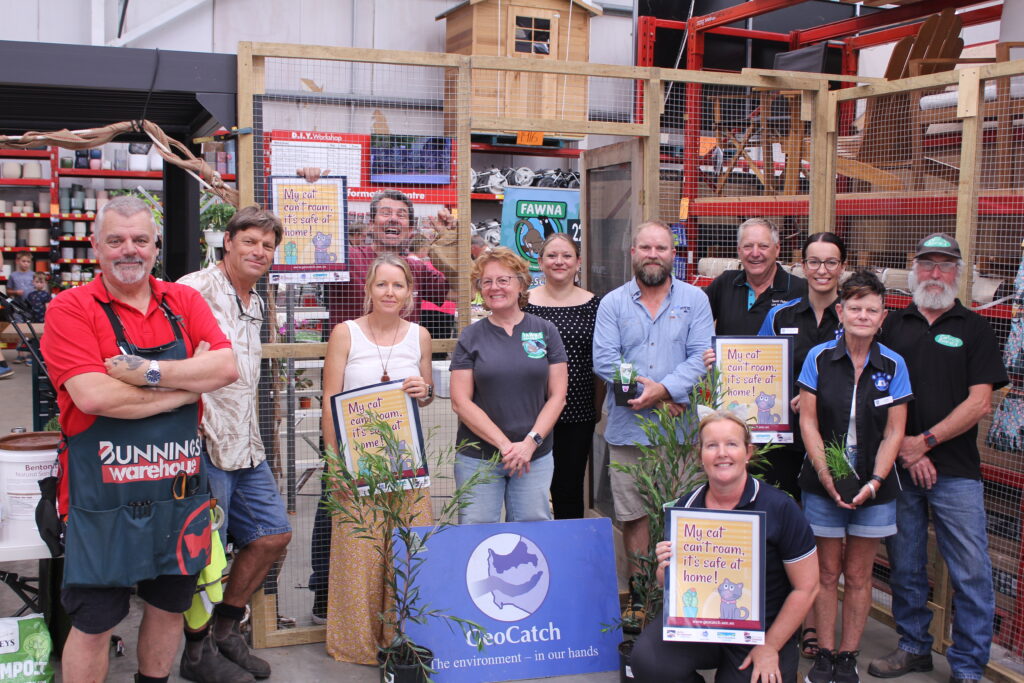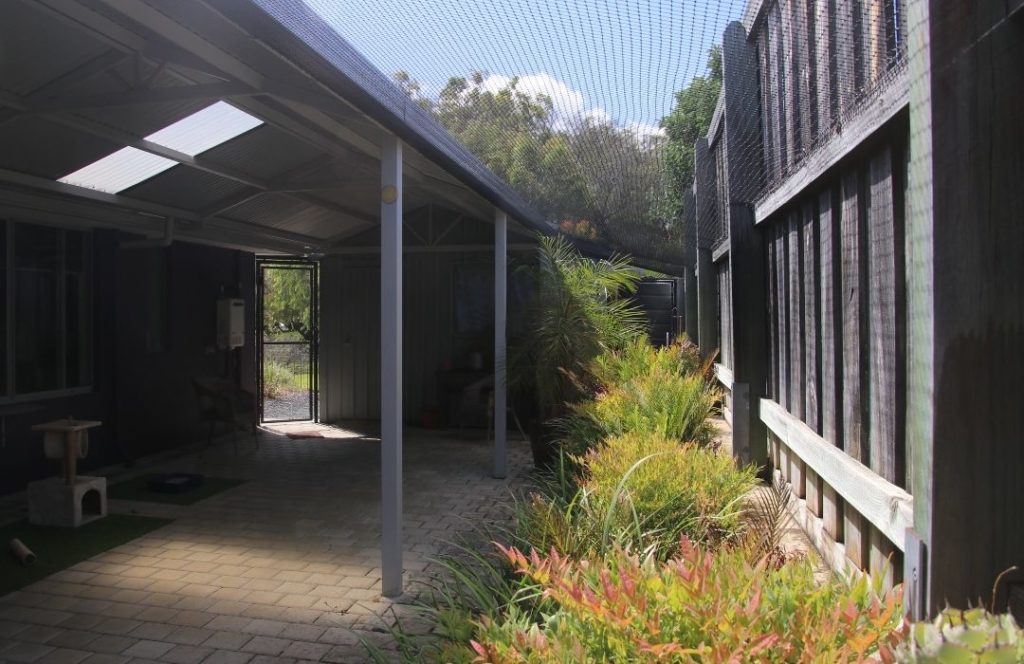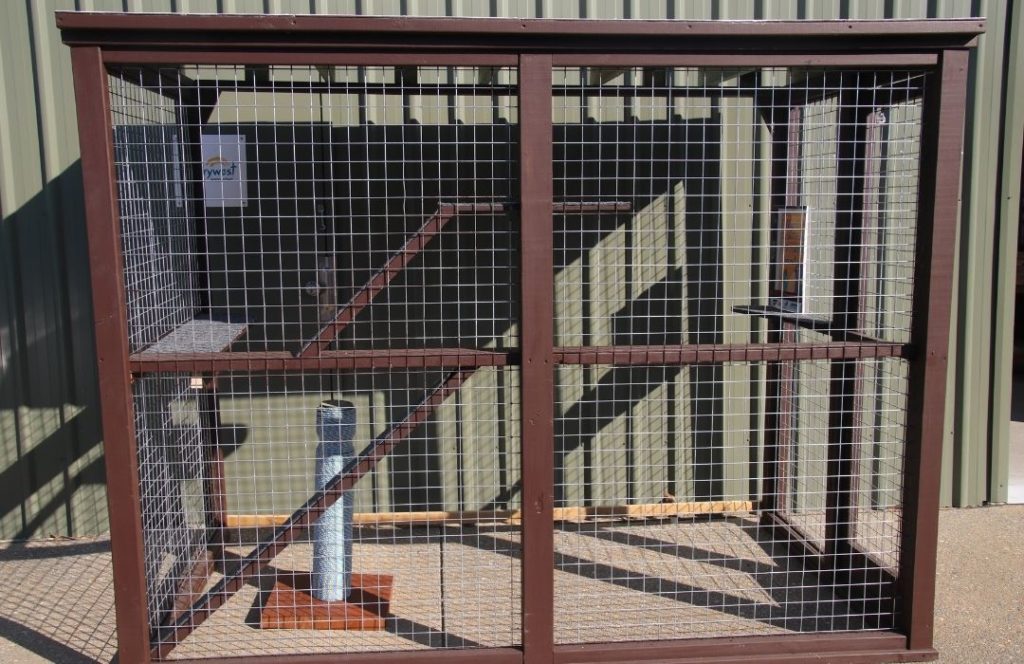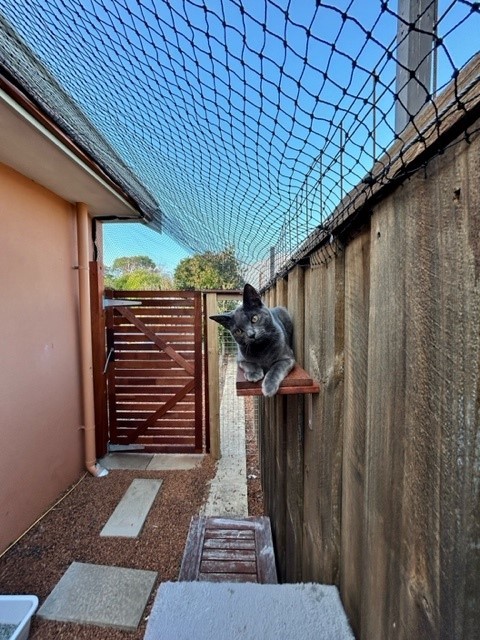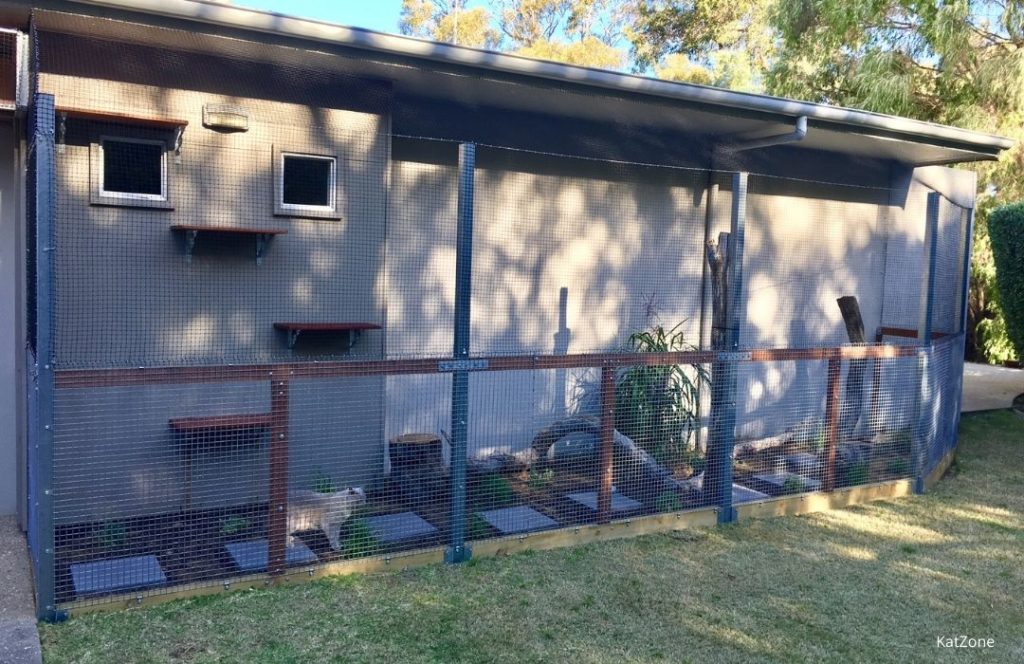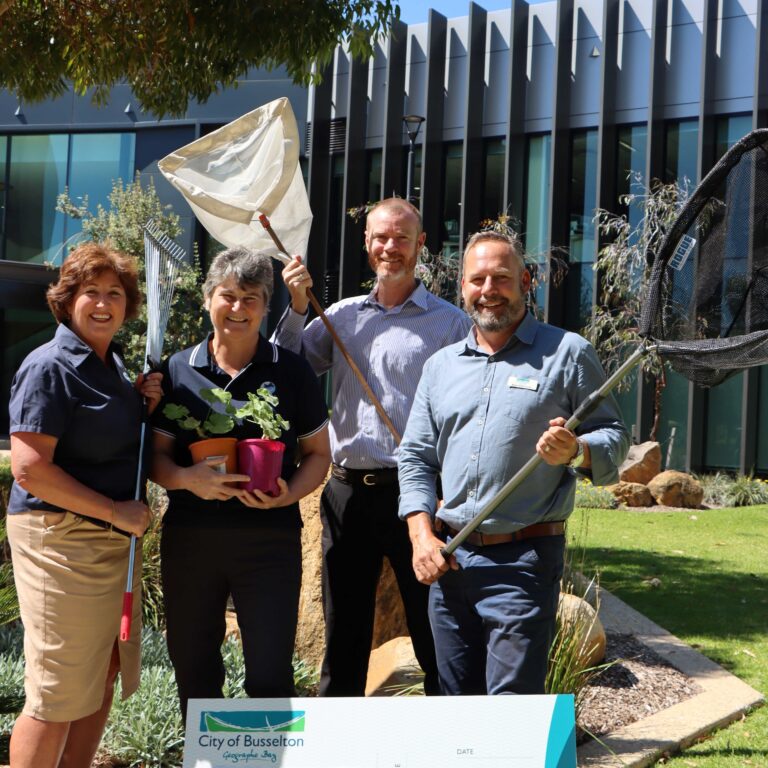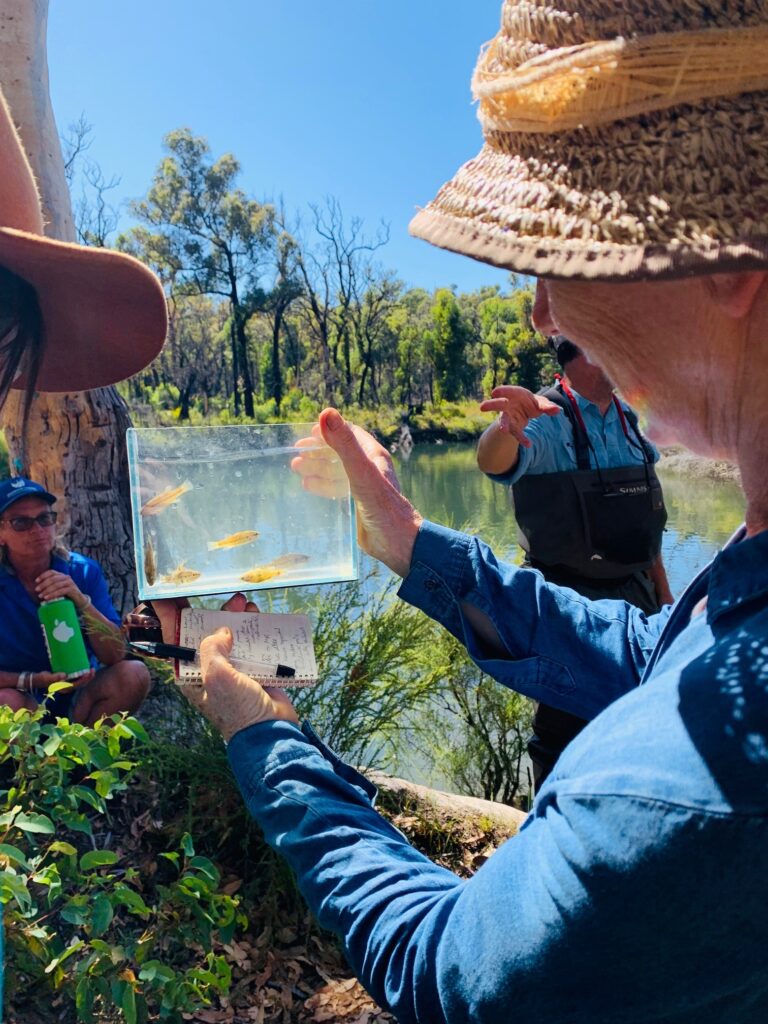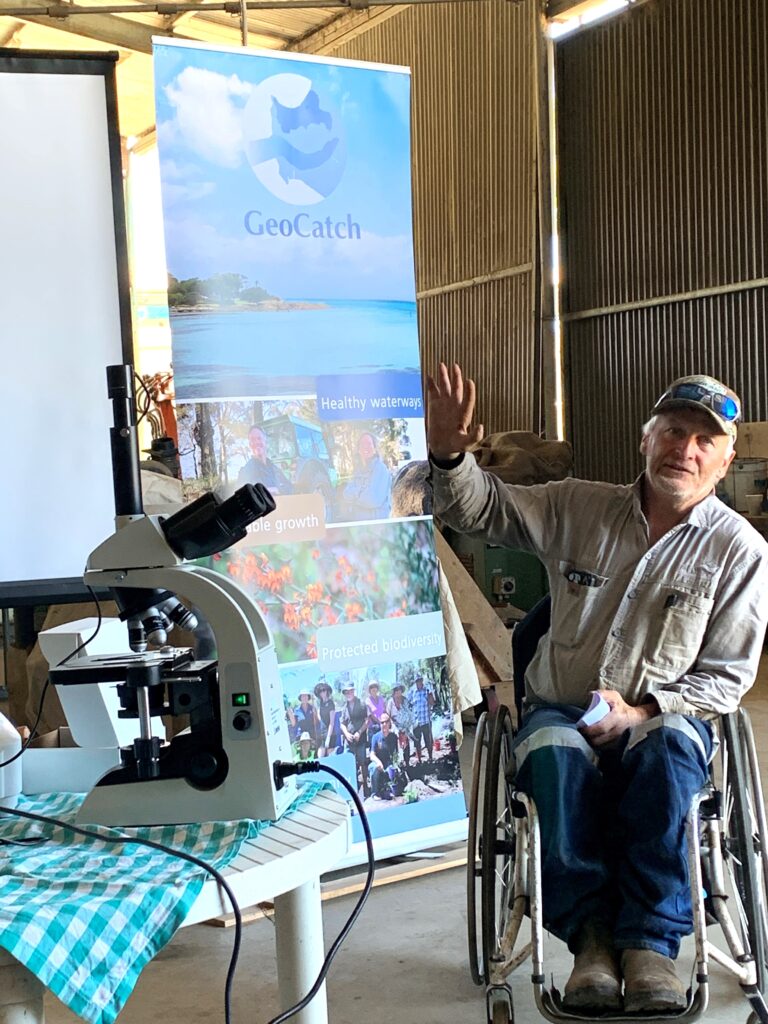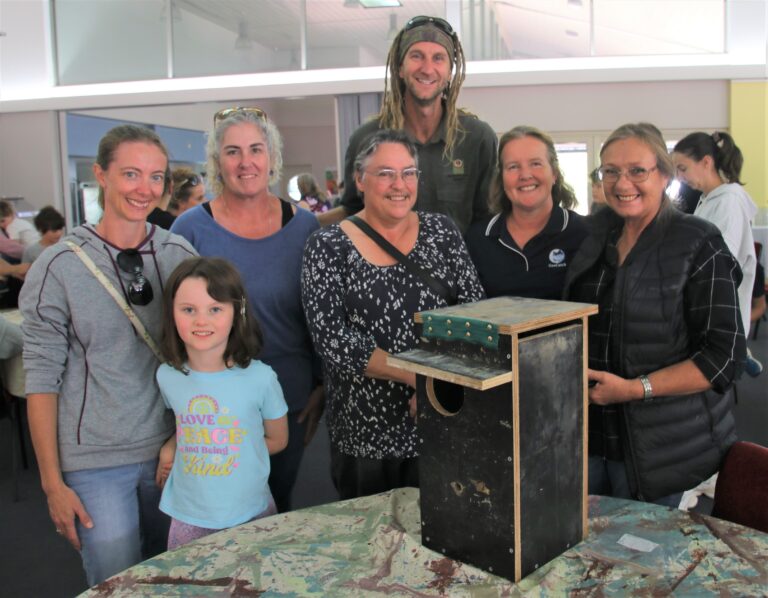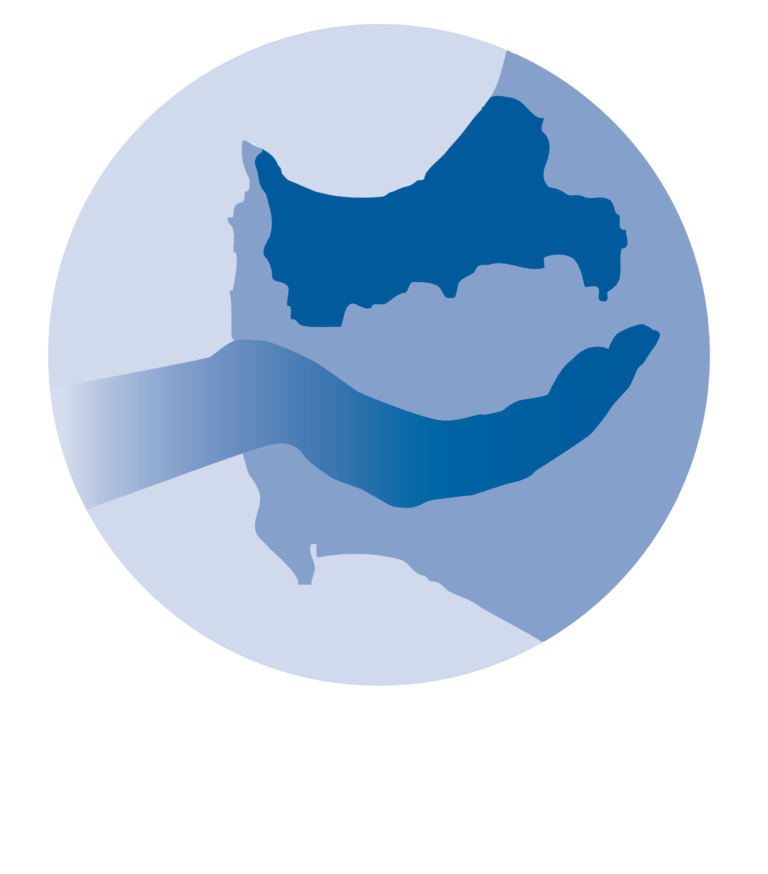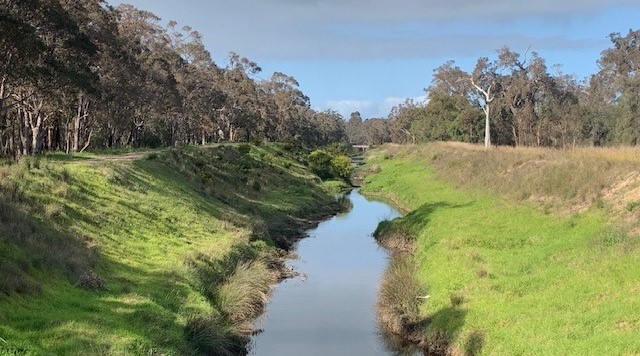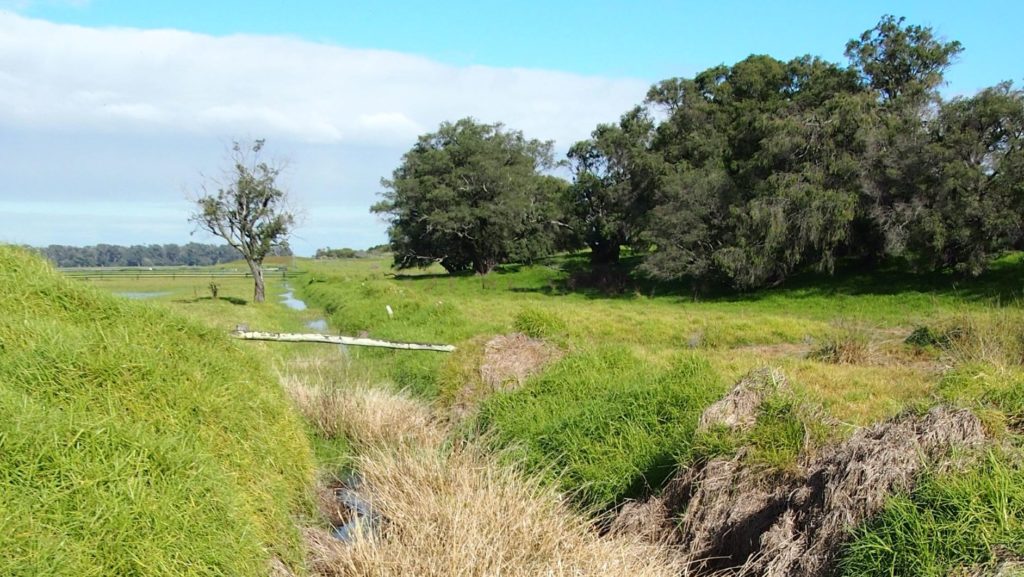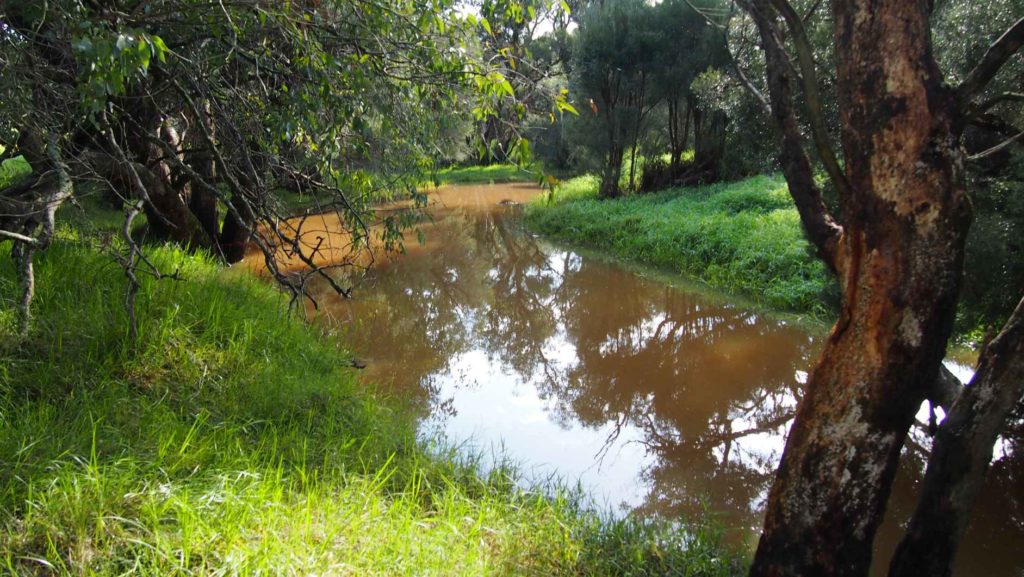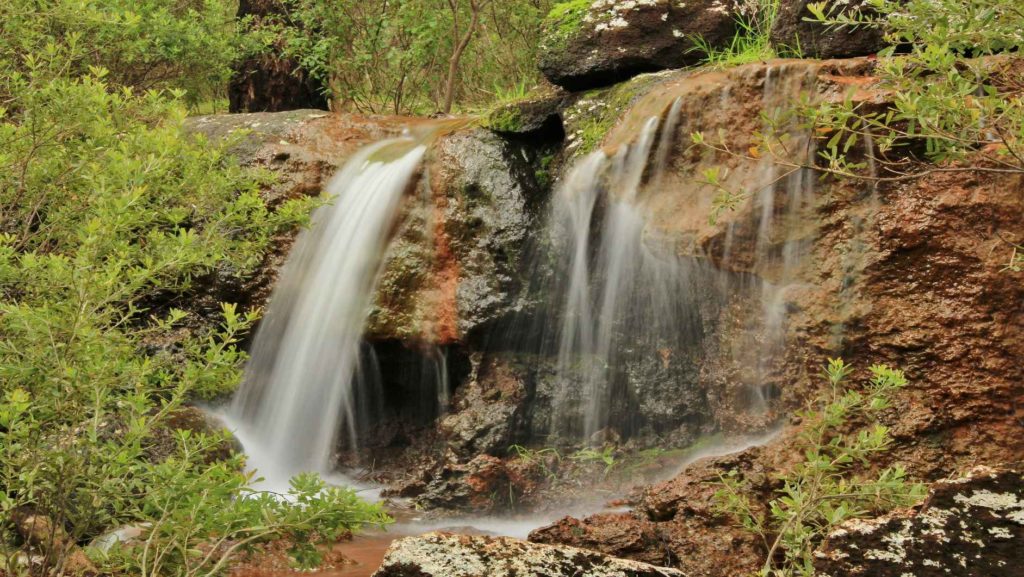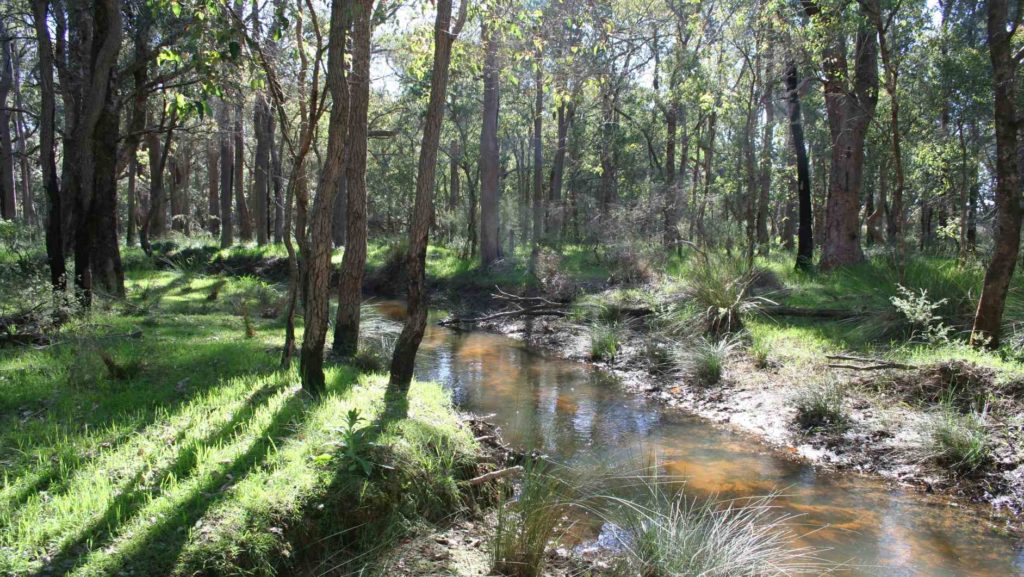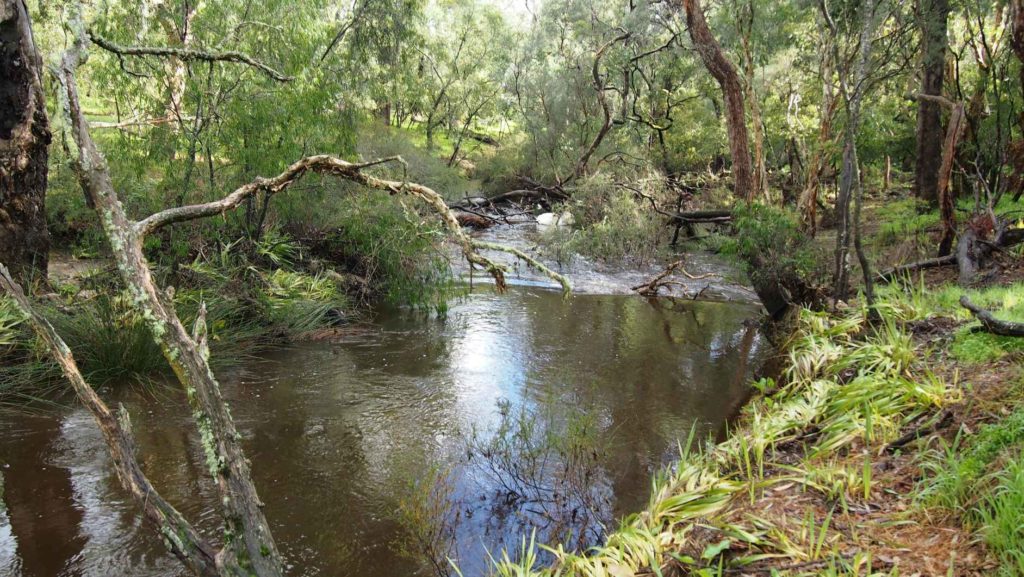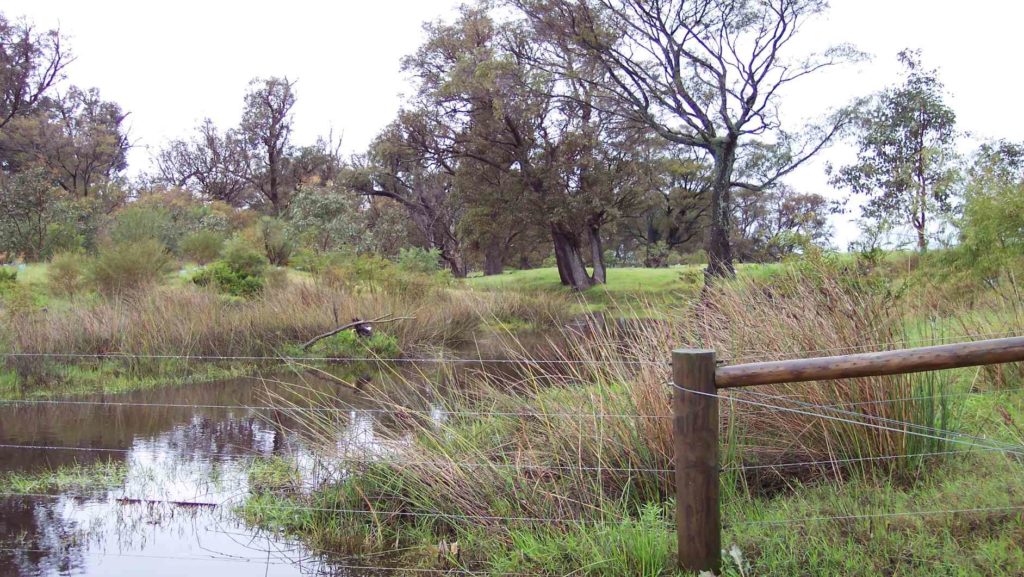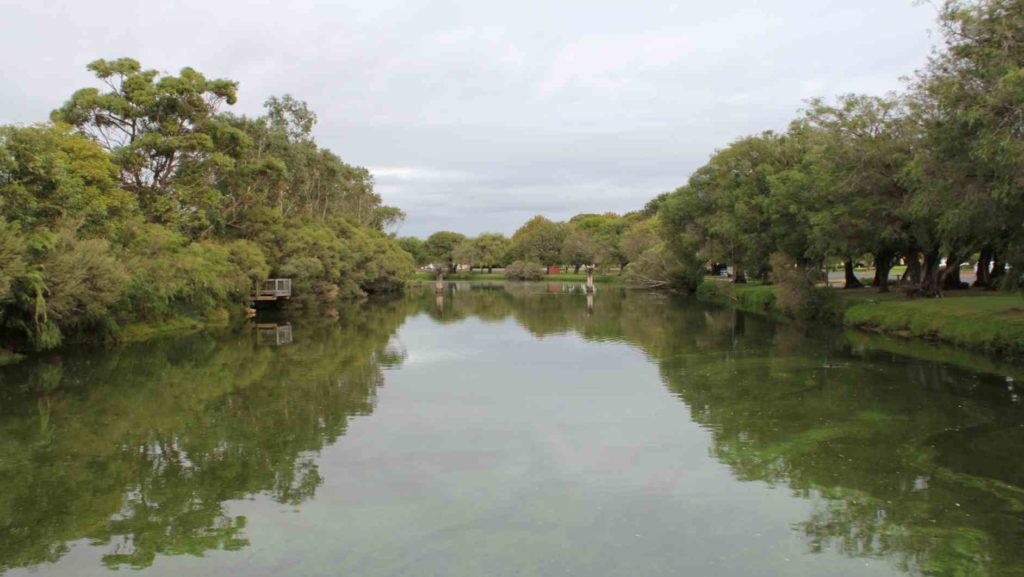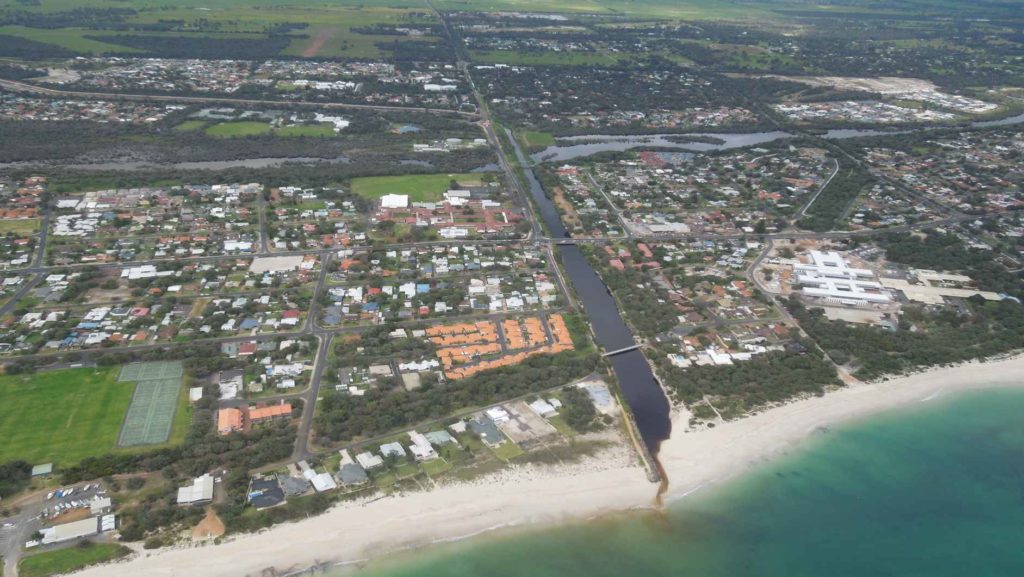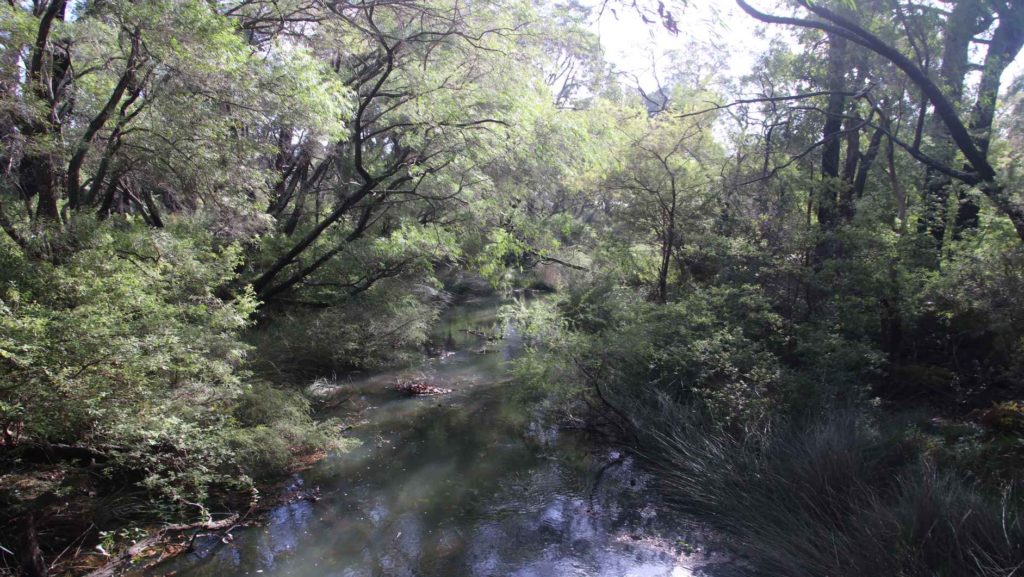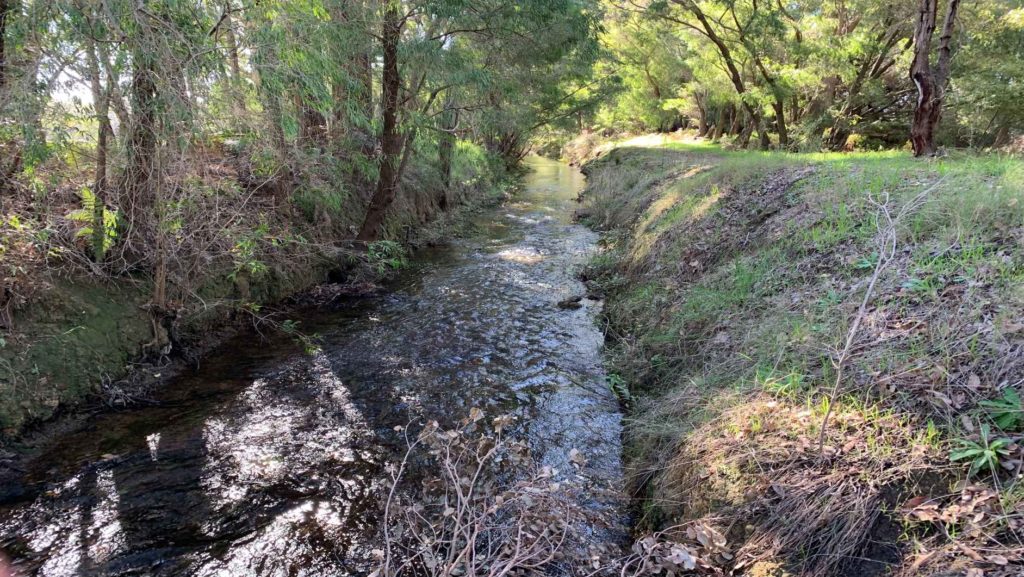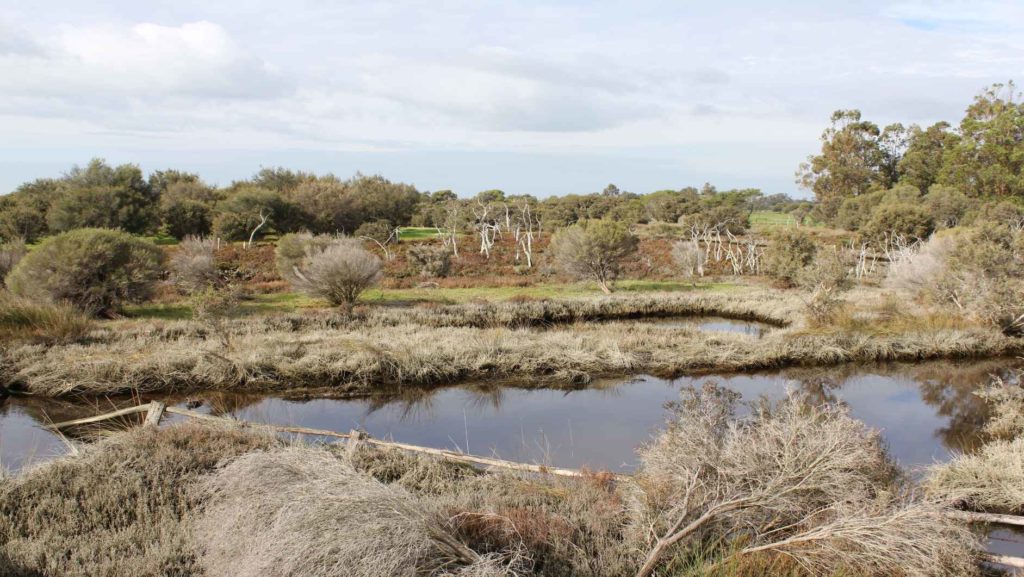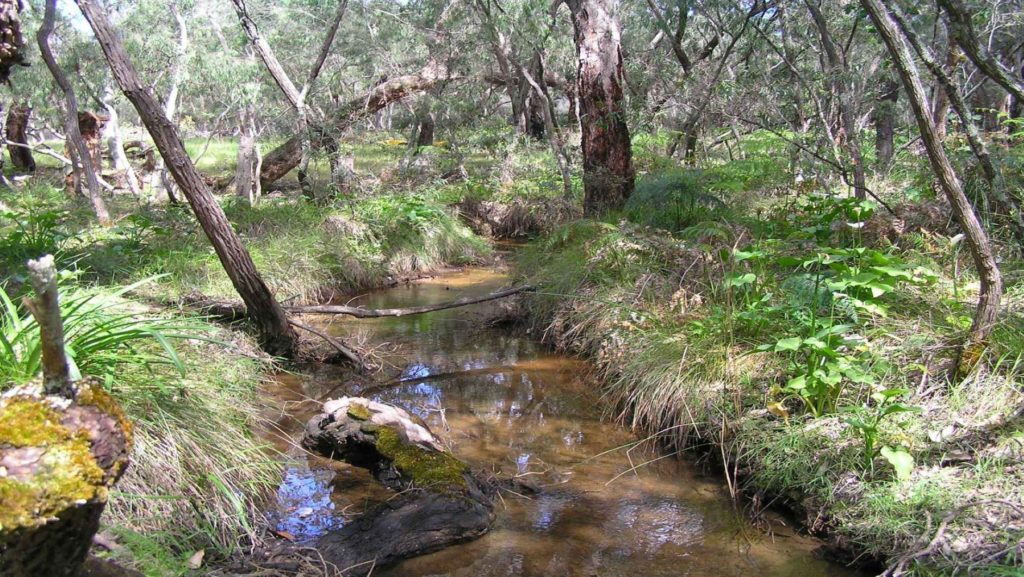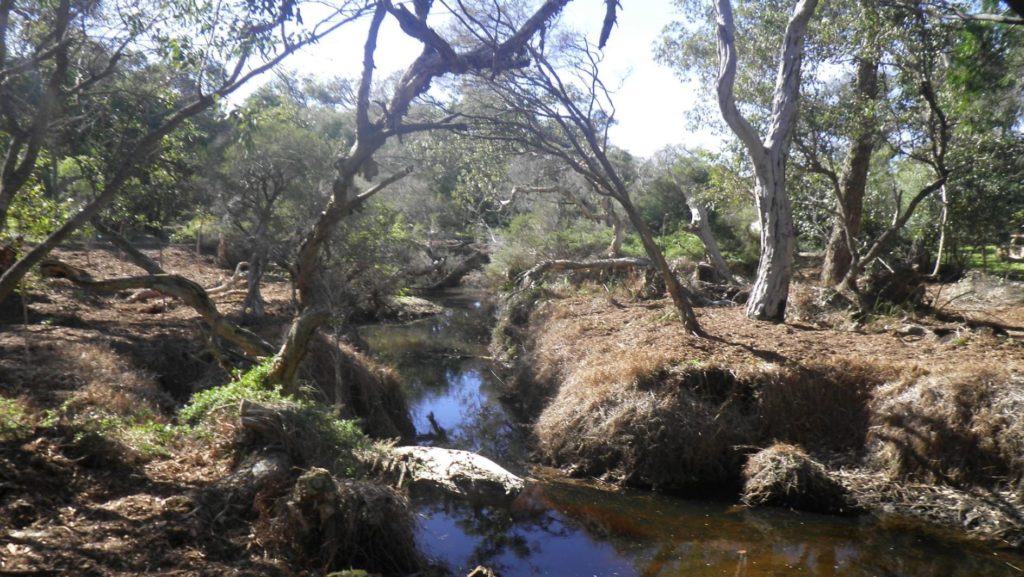Building a catio
Want to build a catio? Register your interest for our catio rebate program coming in 2024.
Domestic cats can thrive in a contained environment.
Contained cats can live up to four times longer than roaming cats, and can live happy, healthy and fulfilled lives if all of their needs are met in the contained environment.
What is a catio?
A catio is a secure outdoor cat enclosure, or “cat patio” for your cat.
Catios are a great way of allowing your cat to enjoy the sights, sounds and smells of the outdoors while keeping them safe and protecting our native wildlife. Cats are healthy and purrfectly happy in a catio, provided it is designed to deliver mental and physical enrichment.
Top 10 benefits of a catio
Catios will support you and your cat by:
- Protecting your cat from vehicles, poisons, diseases accidents, or getting lost.
- Reducing vet bills from cat fights, ingesting toxins or injuries.
- Protecting birds and wildlife: billions of birds are killed each year by roaming cats.
- Reducing roaming populations and the issues they cause, including more roaming cats.
- Providing a healthy outdoor lifestyle with exercise, fresh air, bird watching, sunbathing, jumping, climbing and running.
- Reducing multi-cat issues with increased territory and multiple options for some ‘alone’ time.
- Enriching cat and human companionship by providing shared healthy outdoor spaces to relax in.
- Reducing indoor odours by giving outdoor toilet options.
- Improving neighbour relations – made easier when your cat stays on your side of the fence!
- Providing you with peace of mind, knowing your cat is safe in a protected and secure environment.
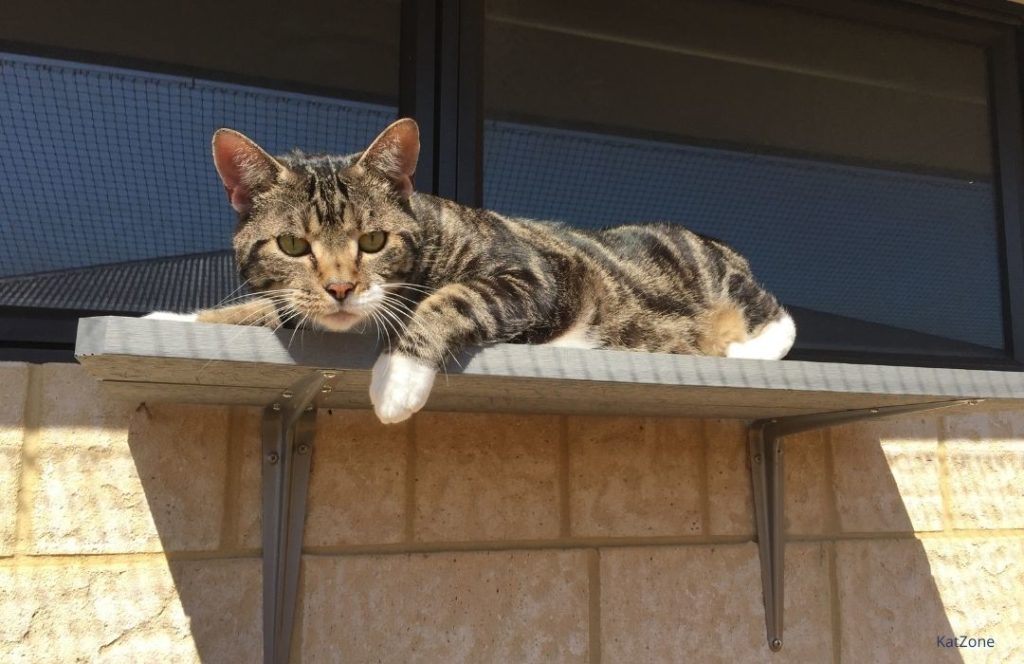

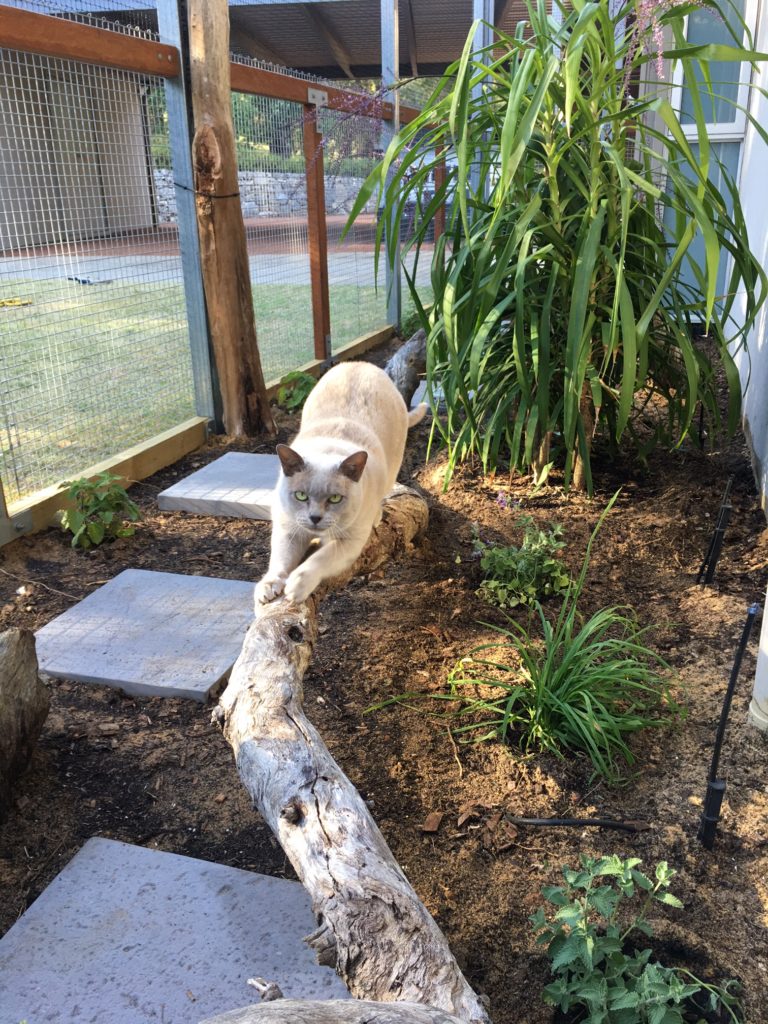

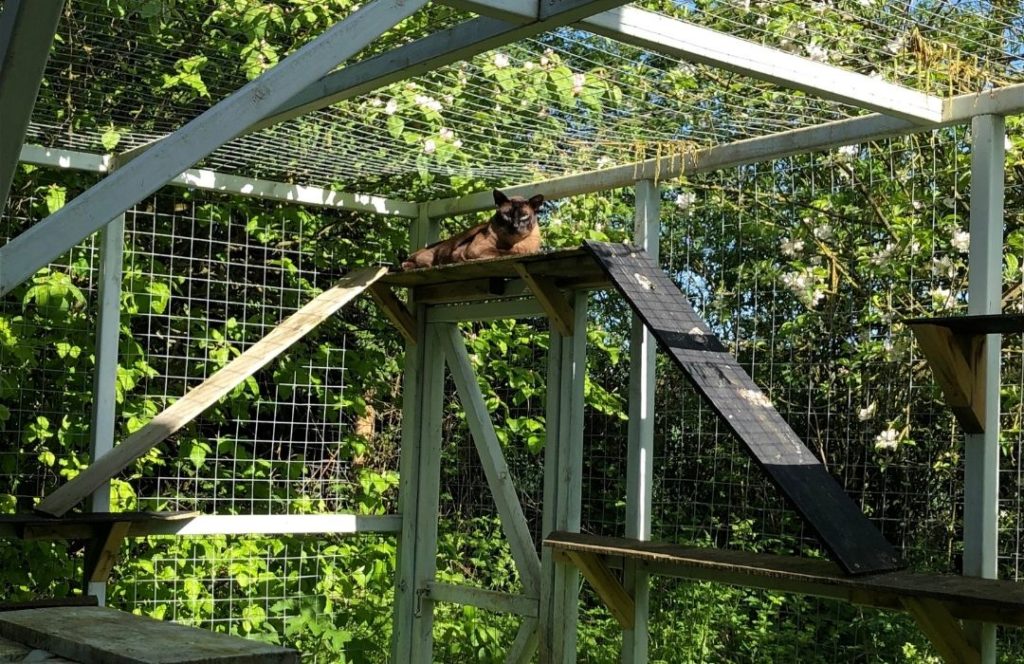

Types of catios
There are always opportunities to expand your cat’s territory in a responsible way. Even if you are not able to build a catio structure there is plenty you can do indoors to enrich your feline’s environment.
Covered catio
These can be either attached to an existing structure (house, garage, fence or shed) or freestanding. The total containment gives you full peace of mind knowing your cat will not get out and wildlife cannot get in.
Open catio
These do not have overhead containment and rely totally on discouraging your cat from climbing over the property fences or walls, either using commercially bought ‘paddles’ that spin, or inward angled netting. Wildlife (flying and climbing) can still access the catio, so extra care should be taken with design and plant selection.
Indoor playground
Cats love high vantage points and being able to observe life outside. Easy access to window(s) and viewing perches is important, so they can engage with the sights, sounds, and smells of the great outdoors.
For all types of catios, there are lots of ways you can help satisfy the inner house panther by
- increasing the area your cat can explore,
- introducing level changes and perches or raised walkways with observation decks and resting platforms,
- providing lots of choice – in bedding, scratchy surfaces (vertical, horizontal), and places to hide or explore (tunnels, boxes), and
- including things your cat can sniff or nibble (cat grass is a must have item!).
Creating a catio
There are endless commercial and DIY options for catios to suit all budgets, tastes and locations. To get started creating your own catio, you will need to consider:
- Which part of the garden/house works best (circulation, sun/shade)?
- How will my cat access the catio (tunnel, window, door, wall cut)?
- What space and budget is available?
- How will you access the catio?
- Will you build it or get someone to install it for you?
- What construction style is the best suited to your situation?
- What materials and finishes for building and features is cat safe?
Catio construction
Catios range in size, shape and materials from timber and wire window boxes to metal frame and mesh walk-in structures, to expansive netted garden areas.
The key elements of a catio are:
- Access point(s) for cats
- Access/door(s) for humans (for maintenance + use)
- Frame (supports and/or wires)
- Mesh or netting sides
- Mesh/netting/polycarb roof
- Shelving/platforms/poles
- Planting areas/lawn/pots
- Litter trays/mulch areas
Resources
Catio Design Guide by Geocatch
GeoCatch Recommended suppliers and installers Catio Services
Responsible Pet Pawrents Program, South West NRM
safeandhappycats.com.au – RSPCA
Happy at Home – Perth South West Metropolitan Alliance
Keeping cats content in catios by Dr Heather Crawford, Murdoch University
